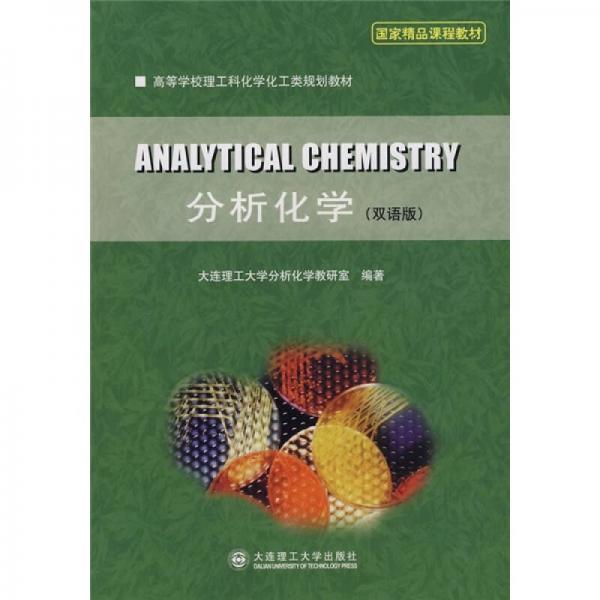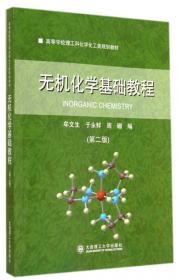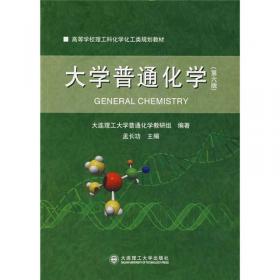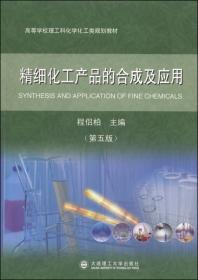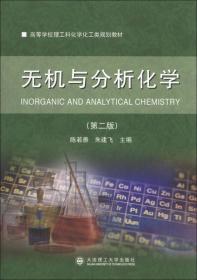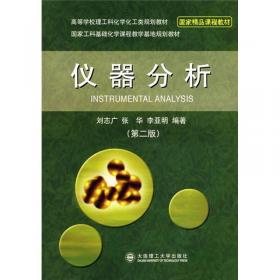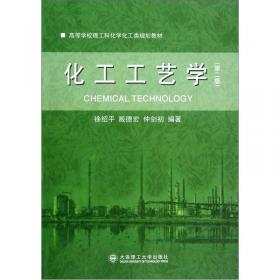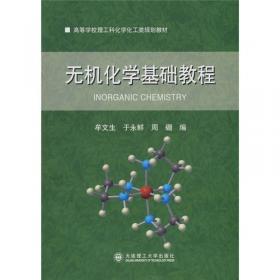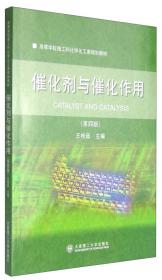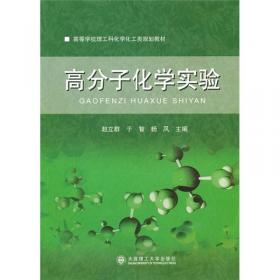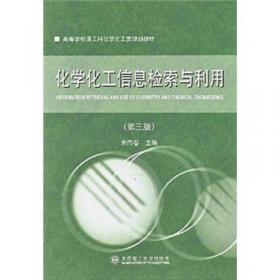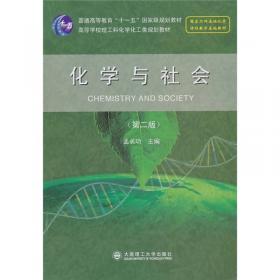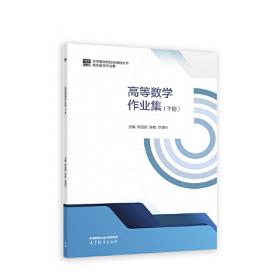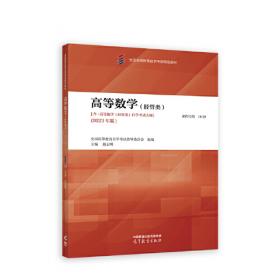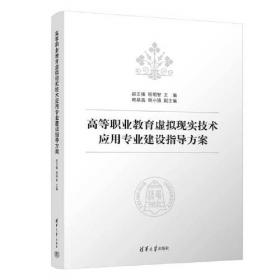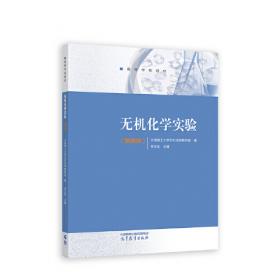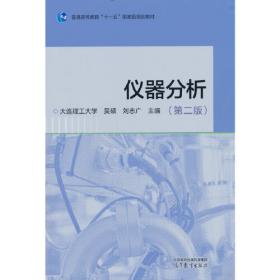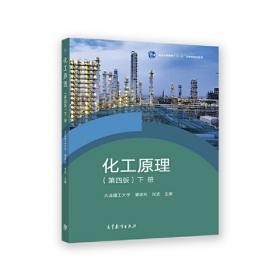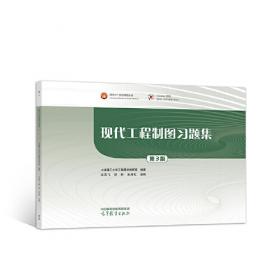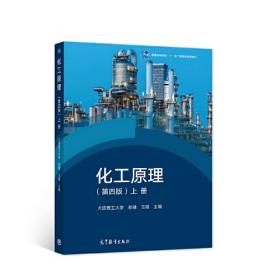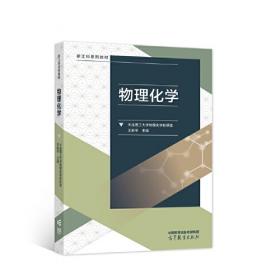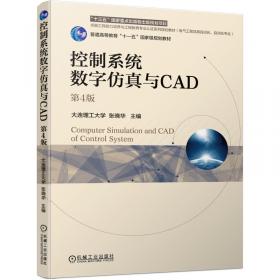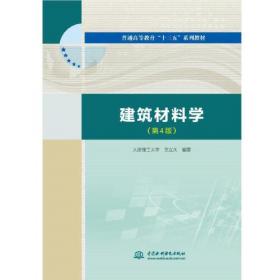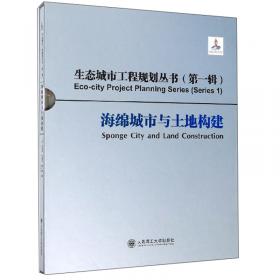高等学校理工科化学化工类规划教材:分析化学(双语版)
出版时间:
2008-11
版次:
1
ISBN:
9787561144237
定价:
35.00
装帧:
平装
开本:
16开
纸张:
胶版纸
页数:
3147页
字数:
460千字
正文语种:
简体中文,英语
46人买过
-
《分析化学(双语版)》在章节顺序和内容安排上参照了《分析化学(双语版)》(第三版,大连理工大学分析化学教研室组编,刘志广主编)中文教材,将众多分析方法按大类编写,同时加强仪器分析内容,突出工科特点,在符合发展趋势及社会需要的同时重视学习的规律和逻辑性。英文内容以高等学校化学化工专业本科生少学时分析化学课程教学大纲为依据,参考多种国外原版教材,以使语言表述准确、地道。为使学生在习惯用英文进行专业思考的同时,又熟悉相应的中文用语,在每章末列出该章用到的主要专业名词的中文解释,以及用中文书写的重点内容概述。 Chapter1Introduction绪论
1.1Thenatureofanalyticalchemistry分析化学的性质
1.2Theroleofanalyticalchemistry分析化学的作用
1.3Theclassificationofanalyticalchemistry分析化学的分类
1.4Thetotalanalyticalprocess分析全过程
Termstounderstand
重点内容概述
Chapter2ErrorsandDataTreatmentinQuantitativeAnalysis定量分析中的误差及数据处理
2.1Fundamentaltermsoferrors误差的基本术语
2.2Typesoferrorsinexperimentaldata实验数据中的误差类型
2.2.1Systematicerrors系统误差
2.2.2Randomerrors偶然误差
2.3Evaluationofanalyticaldata分析数据的评价
2.3.1Testsofsignificance显著性检验
2.3.2Rejectingdata可疑值取舍
2.4Significantfigures有效数字
Problems
Termstounderstand
重点内容概述
Chapter3TitrimetricAnalysis滴定分析法
3.1Generalprinciples基本原理
3.1.1Relevanttermsoftitrimetricanalysis滴定分析相关术语
3.1.2Thepreparationofstandardsolutionandtheexpressionofconcentration标准溶液的配制与浓度表示方法
3.1.3Thetypesoftitrimetricreactions滴定反应类型
3.2Acid-basetitration酸碱滴定
3.2.1Acid-baseequilibria酸碱平衡
3.2.2Titrationcurves滴定曲线
3.2.3Acid-baseindicators酸碱指示剂
3.2.4Applicationsofacid-basetitration酸碱滴定的应用
3.3Complexometrictitration配位滴定
3.3.1Metal-chelatecomplexes金属螯合物
3.3.2EDTA乙二胺四乙酸
3.3.3EDTAtitrationcurvesEDTA滴定曲线
3.3.4MetalIonindicators金属离子指示剂
3.3.5ApplicationsofEDTAtitrationtechniquesEDTA滴定方法的应用
3.4Oxidation-reductiontitration氧化还原滴定
3.4.1Redoxreactions氧化还原反应
3.4.2Rateofredoxreactions氧化还原反应的速率
3.4.3Titrationcurves滴定曲线
3.4.4Redoxindicators氧化还原指示剂
3.4.5Applicationsofredoxtitrations氧化还原滴定的应用
3.5Precipitationtitration沉淀滴定
3.5.1Precipitationreactions沉淀滴定反应
3.5.2Titrationcurves滴定曲线
3.5.3End-pointdetection终点检测
Problems
Termstounderstand
重点内容概述
Chapter4Potentiometry电位分析法
4.1Introduction简介
4.1.1Classesandcharacteristics分类及性质
4.1.2Definition定义
4.2Typesofpotentiometricelectrodes电极种类
4.2.1Referenceelectrodes参比电极
4.2.2Indicatorelectrodes指示电极
4.2.3Electroderesponseandselectivity电极响应及选择性
4.3Potentiometricmethodsandapplication电位法及应用
4.3.1Directpotentiometricmeasurement直接电位法
4.3.2Potentiometrictitrations电位滴定
4.3.3Applicationsofpotentiometry电位法应用
Problems
Terlnstounderstand
重点内容概述
Chapter5Chromatography色谱法
5.1Anintroductiontochromatographicmethods色谱法概述
5.2Fundamentaltheoryofgaschromatography气相色谱基本原理
5.2.1Platetheory塔板理论
5.2.2Kinetictheory(ratetheory)速率理论
5.2.3TheresolutionRsasameasureofpeakseparation分离度
5.3Gaschromatography气相色谱
5.3.1Componentsofagaschromatograph气相色谱仪的组成
5.3.2Stationaryphasesforgas-liquidchromatography气液色谱固定相
5.3.3Applicationsofgas-liquidchromatography气液色谱的应用
5.3.4Adsorptionchromatography吸附色谱
5.4Highperformanceliquidchromatography高效液相色谱
5.4.1Instrumentation仪器组成
5.4.2High-performancepartitionchromatography高效分配色谱
5.5Miscellaneousseparationmethods其他分离方法
5.5.1High-performanceion-exchangechromatography高效离子交换色谱
5.5.2Capillaryelectrophoresis毛细管电泳
5.5.3Planarchromatography平板色谱
Problems
Termstounderstand
重点内容概述
Chapter6AtomicAbsorptionSpectrometry原子吸收光谱分析法
6.1Introduction概述
6.2Principles原理
6.2.1TheprocessofAAS,resonancelineandabsorptionline原子吸收光谱法的过程,共振线及吸收线
6.2.2Thenumberofgroundatomandthetemperatureofflame基态原子数与光焰温度
6.2.3QuantitativeanalysisofAAS原子吸收光谱定量分析
6.3Instrumentation仪器
6.3.1Primaryradiationsources光源
6.3.2Atomizer原子仪器
6.3.3Opticaldispersivesystems分光系统
6.3.4Detectors检测器
6.3.5Signalmeasurements信号测量
6.4Quantitativemeasurementsandinterferences定量测定及干扰
6.4.1Quantitativemeasurements定量测定
6.4.2Interferences干扰
6.4.3Sensitivity
6.5ApplicationsofAAS原子吸收光谱法的应用
Problems
Termstounderstand
重点内容概述
Chapter7UltravioletandVisibleSpectrophotometry紫外-可见分光光度法
7.1Introduction简介
7.2Ultravioletandvisibleabsorptionspectroscopy紫外-可见吸收光谱
7.2.1Introductionforradiantenergy辐射能简介
7.2.2Selectiveabsorptionofradiationandabsorbancespectrum物质对光的选择性吸收和吸收光谱
7.2.3Absorbingspeciesandelectrontransition吸收物质与电子跃迁
7.3Lawofabsorption吸收定律
7.3.1Lambert-Beerslaw朗伯-比尔定律
7.3.2Absorptivity吸光系数
7.3.3ApparentdeviationsfromBeerslaw对比尔定律的明显偏离
7.4Instruments仪器
7.5Generaltypesofspectrophotometer分光光度计种类
7.6ApplicationofUV-Visabsorptionspectroscopy紫外-可见吸收光谱的应用
7.6.1Applicationofabsorptionmeasurementtoqualitativeanalysis光吸收测定在定性分析上的应用
7.6.2Quantitativeanalysisbyabsorptionmeasurements光吸收测量定量分析法
7.6.3Derivativespectrophotometry导数分光光度法
Problems
Termstounderstand
重点内容概述
Chapter8InfraredAbsorptionSpectroscopy红外吸收光谱
8.1Theoryofinfraredabsorption红外吸收基本原理
8.1.1Dipolechangesduringvibrationsandrotations振转运动中的偶极距变化
8.1.2Mechanicalmodelofstretchingvibrations伸缩振动机械模型
8.1.3Quantumtreatmentofvibrations振动的量子力学处理、
8.1.4Typesofmolecularvibrations分子振动形式
8.2Infraredinstrumentcomponents红外仪器组成
8.2.1Wavelengthselection波长选择
8.2.2Samplingtechniques采样技术
8.2.3Infraredspectrophotometersforqualitativeanalysis定性分析用红外分光光度计
8.2.4Othertechniques其他技术
8.3Thegroupfrequenciesoffunctionalgroupsinorganiccompounds有机化合物官能团的特征频率
8.4Thefactorsaffectinggroupfrequencies影响基团特征吸收频率的因素
8.4.1Adjacentgroups邻近基团的影响
8.4.2Hydrogenbonding氢键
8.5Qualitativeapplicationstostructuralanalysis结构分析的定性应用
Problems
Termstounderstand
重点内容概述
Chapter9NuclearMagneticResonanceSpectroscopy核磁共振波谱法
9.1Theoryofnuclearmagneticresonance核磁共振理论
9.1.1QuantumdescriptionofNMRNMR的量子描述
9.1.2ClassicaldescriptionofNMRNMR的经典描述
9.2ExperimentalmethodsofNMRspectroscopyNMR波谱的实验方法
9.3Thechemicalshiftofprotonsinorganiccompounds有机化合物中质子的化学位移
9.3.1Souroeofthechemicalshift化学位移产生原
9.3.3EnvironmentaleffectsonthechemicalshiftofprotonNMRspectra影响NMR波谱中质子化学位移的环境因素
9.4Spin-Spincoupling自旋-自旋耦合
9.4.1SourceofSpin-Spincouplingandsplitting自旋-自旋耦合与裂分的产生原因
9.4.2Couplingconstant耦合常数
9.4.3Rule8governingtheinterpretationofspectra光谱解析规则
9.5QualitativeapplicationsofprotonNMR质子NMR波谱的定性应用
Problems
Termstounderstand
重点内容概述
Chapter10MassSpectrometry质谱法
10.1Theprincipleofmassspectroscopyandmassspectrometer质谱法和质谱仪的原理
10.2Massspectra质谱图
10.2.1Theelectronimpactionizationprocess电子轰击离子过程
10.2.2Themolecularion分子离子
10.2.3Isotopepeaks同位素离子峰
10.2.4Peaksforcollisionproducts碎片离子峰
10.2.5Thebasepeak基峰
10.3Qualitativeapplicationsofmassspectroscopy质谱法的定性应用
Problems
Termstounderstand
重点内容概述
Appendix附录
References参考文献
-
内容简介:
《分析化学(双语版)》在章节顺序和内容安排上参照了《分析化学(双语版)》(第三版,大连理工大学分析化学教研室组编,刘志广主编)中文教材,将众多分析方法按大类编写,同时加强仪器分析内容,突出工科特点,在符合发展趋势及社会需要的同时重视学习的规律和逻辑性。英文内容以高等学校化学化工专业本科生少学时分析化学课程教学大纲为依据,参考多种国外原版教材,以使语言表述准确、地道。为使学生在习惯用英文进行专业思考的同时,又熟悉相应的中文用语,在每章末列出该章用到的主要专业名词的中文解释,以及用中文书写的重点内容概述。
-
目录:
Chapter1Introduction绪论
1.1Thenatureofanalyticalchemistry分析化学的性质
1.2Theroleofanalyticalchemistry分析化学的作用
1.3Theclassificationofanalyticalchemistry分析化学的分类
1.4Thetotalanalyticalprocess分析全过程
Termstounderstand
重点内容概述
Chapter2ErrorsandDataTreatmentinQuantitativeAnalysis定量分析中的误差及数据处理
2.1Fundamentaltermsoferrors误差的基本术语
2.2Typesoferrorsinexperimentaldata实验数据中的误差类型
2.2.1Systematicerrors系统误差
2.2.2Randomerrors偶然误差
2.3Evaluationofanalyticaldata分析数据的评价
2.3.1Testsofsignificance显著性检验
2.3.2Rejectingdata可疑值取舍
2.4Significantfigures有效数字
Problems
Termstounderstand
重点内容概述
Chapter3TitrimetricAnalysis滴定分析法
3.1Generalprinciples基本原理
3.1.1Relevanttermsoftitrimetricanalysis滴定分析相关术语
3.1.2Thepreparationofstandardsolutionandtheexpressionofconcentration标准溶液的配制与浓度表示方法
3.1.3Thetypesoftitrimetricreactions滴定反应类型
3.2Acid-basetitration酸碱滴定
3.2.1Acid-baseequilibria酸碱平衡
3.2.2Titrationcurves滴定曲线
3.2.3Acid-baseindicators酸碱指示剂
3.2.4Applicationsofacid-basetitration酸碱滴定的应用
3.3Complexometrictitration配位滴定
3.3.1Metal-chelatecomplexes金属螯合物
3.3.2EDTA乙二胺四乙酸
3.3.3EDTAtitrationcurvesEDTA滴定曲线
3.3.4MetalIonindicators金属离子指示剂
3.3.5ApplicationsofEDTAtitrationtechniquesEDTA滴定方法的应用
3.4Oxidation-reductiontitration氧化还原滴定
3.4.1Redoxreactions氧化还原反应
3.4.2Rateofredoxreactions氧化还原反应的速率
3.4.3Titrationcurves滴定曲线
3.4.4Redoxindicators氧化还原指示剂
3.4.5Applicationsofredoxtitrations氧化还原滴定的应用
3.5Precipitationtitration沉淀滴定
3.5.1Precipitationreactions沉淀滴定反应
3.5.2Titrationcurves滴定曲线
3.5.3End-pointdetection终点检测
Problems
Termstounderstand
重点内容概述
Chapter4Potentiometry电位分析法
4.1Introduction简介
4.1.1Classesandcharacteristics分类及性质
4.1.2Definition定义
4.2Typesofpotentiometricelectrodes电极种类
4.2.1Referenceelectrodes参比电极
4.2.2Indicatorelectrodes指示电极
4.2.3Electroderesponseandselectivity电极响应及选择性
4.3Potentiometricmethodsandapplication电位法及应用
4.3.1Directpotentiometricmeasurement直接电位法
4.3.2Potentiometrictitrations电位滴定
4.3.3Applicationsofpotentiometry电位法应用
Problems
Terlnstounderstand
重点内容概述
Chapter5Chromatography色谱法
5.1Anintroductiontochromatographicmethods色谱法概述
5.2Fundamentaltheoryofgaschromatography气相色谱基本原理
5.2.1Platetheory塔板理论
5.2.2Kinetictheory(ratetheory)速率理论
5.2.3TheresolutionRsasameasureofpeakseparation分离度
5.3Gaschromatography气相色谱
5.3.1Componentsofagaschromatograph气相色谱仪的组成
5.3.2Stationaryphasesforgas-liquidchromatography气液色谱固定相
5.3.3Applicationsofgas-liquidchromatography气液色谱的应用
5.3.4Adsorptionchromatography吸附色谱
5.4Highperformanceliquidchromatography高效液相色谱
5.4.1Instrumentation仪器组成
5.4.2High-performancepartitionchromatography高效分配色谱
5.5Miscellaneousseparationmethods其他分离方法
5.5.1High-performanceion-exchangechromatography高效离子交换色谱
5.5.2Capillaryelectrophoresis毛细管电泳
5.5.3Planarchromatography平板色谱
Problems
Termstounderstand
重点内容概述
Chapter6AtomicAbsorptionSpectrometry原子吸收光谱分析法
6.1Introduction概述
6.2Principles原理
6.2.1TheprocessofAAS,resonancelineandabsorptionline原子吸收光谱法的过程,共振线及吸收线
6.2.2Thenumberofgroundatomandthetemperatureofflame基态原子数与光焰温度
6.2.3QuantitativeanalysisofAAS原子吸收光谱定量分析
6.3Instrumentation仪器
6.3.1Primaryradiationsources光源
6.3.2Atomizer原子仪器
6.3.3Opticaldispersivesystems分光系统
6.3.4Detectors检测器
6.3.5Signalmeasurements信号测量
6.4Quantitativemeasurementsandinterferences定量测定及干扰
6.4.1Quantitativemeasurements定量测定
6.4.2Interferences干扰
6.4.3Sensitivity
6.5ApplicationsofAAS原子吸收光谱法的应用
Problems
Termstounderstand
重点内容概述
Chapter7UltravioletandVisibleSpectrophotometry紫外-可见分光光度法
7.1Introduction简介
7.2Ultravioletandvisibleabsorptionspectroscopy紫外-可见吸收光谱
7.2.1Introductionforradiantenergy辐射能简介
7.2.2Selectiveabsorptionofradiationandabsorbancespectrum物质对光的选择性吸收和吸收光谱
7.2.3Absorbingspeciesandelectrontransition吸收物质与电子跃迁
7.3Lawofabsorption吸收定律
7.3.1Lambert-Beerslaw朗伯-比尔定律
7.3.2Absorptivity吸光系数
7.3.3ApparentdeviationsfromBeerslaw对比尔定律的明显偏离
7.4Instruments仪器
7.5Generaltypesofspectrophotometer分光光度计种类
7.6ApplicationofUV-Visabsorptionspectroscopy紫外-可见吸收光谱的应用
7.6.1Applicationofabsorptionmeasurementtoqualitativeanalysis光吸收测定在定性分析上的应用
7.6.2Quantitativeanalysisbyabsorptionmeasurements光吸收测量定量分析法
7.6.3Derivativespectrophotometry导数分光光度法
Problems
Termstounderstand
重点内容概述
Chapter8InfraredAbsorptionSpectroscopy红外吸收光谱
8.1Theoryofinfraredabsorption红外吸收基本原理
8.1.1Dipolechangesduringvibrationsandrotations振转运动中的偶极距变化
8.1.2Mechanicalmodelofstretchingvibrations伸缩振动机械模型
8.1.3Quantumtreatmentofvibrations振动的量子力学处理、
8.1.4Typesofmolecularvibrations分子振动形式
8.2Infraredinstrumentcomponents红外仪器组成
8.2.1Wavelengthselection波长选择
8.2.2Samplingtechniques采样技术
8.2.3Infraredspectrophotometersforqualitativeanalysis定性分析用红外分光光度计
8.2.4Othertechniques其他技术
8.3Thegroupfrequenciesoffunctionalgroupsinorganiccompounds有机化合物官能团的特征频率
8.4Thefactorsaffectinggroupfrequencies影响基团特征吸收频率的因素
8.4.1Adjacentgroups邻近基团的影响
8.4.2Hydrogenbonding氢键
8.5Qualitativeapplicationstostructuralanalysis结构分析的定性应用
Problems
Termstounderstand
重点内容概述
Chapter9NuclearMagneticResonanceSpectroscopy核磁共振波谱法
9.1Theoryofnuclearmagneticresonance核磁共振理论
9.1.1QuantumdescriptionofNMRNMR的量子描述
9.1.2ClassicaldescriptionofNMRNMR的经典描述
9.2ExperimentalmethodsofNMRspectroscopyNMR波谱的实验方法
9.3Thechemicalshiftofprotonsinorganiccompounds有机化合物中质子的化学位移
9.3.1Souroeofthechemicalshift化学位移产生原
9.3.3EnvironmentaleffectsonthechemicalshiftofprotonNMRspectra影响NMR波谱中质子化学位移的环境因素
9.4Spin-Spincoupling自旋-自旋耦合
9.4.1SourceofSpin-Spincouplingandsplitting自旋-自旋耦合与裂分的产生原因
9.4.2Couplingconstant耦合常数
9.4.3Rule8governingtheinterpretationofspectra光谱解析规则
9.5QualitativeapplicationsofprotonNMR质子NMR波谱的定性应用
Problems
Termstounderstand
重点内容概述
Chapter10MassSpectrometry质谱法
10.1Theprincipleofmassspectroscopyandmassspectrometer质谱法和质谱仪的原理
10.2Massspectra质谱图
10.2.1Theelectronimpactionizationprocess电子轰击离子过程
10.2.2Themolecularion分子离子
10.2.3Isotopepeaks同位素离子峰
10.2.4Peaksforcollisionproducts碎片离子峰
10.2.5Thebasepeak基峰
10.3Qualitativeapplicationsofmassspectroscopy质谱法的定性应用
Problems
Termstounderstand
重点内容概述
Appendix附录
References参考文献
查看详情
-
 2
2
全新
河北省保定市
平均发货31小时
成功完成率80.88%
-
 2
2
全新
河北省保定市
平均发货30小时
成功完成率80.47%

 占位居中
占位居中

